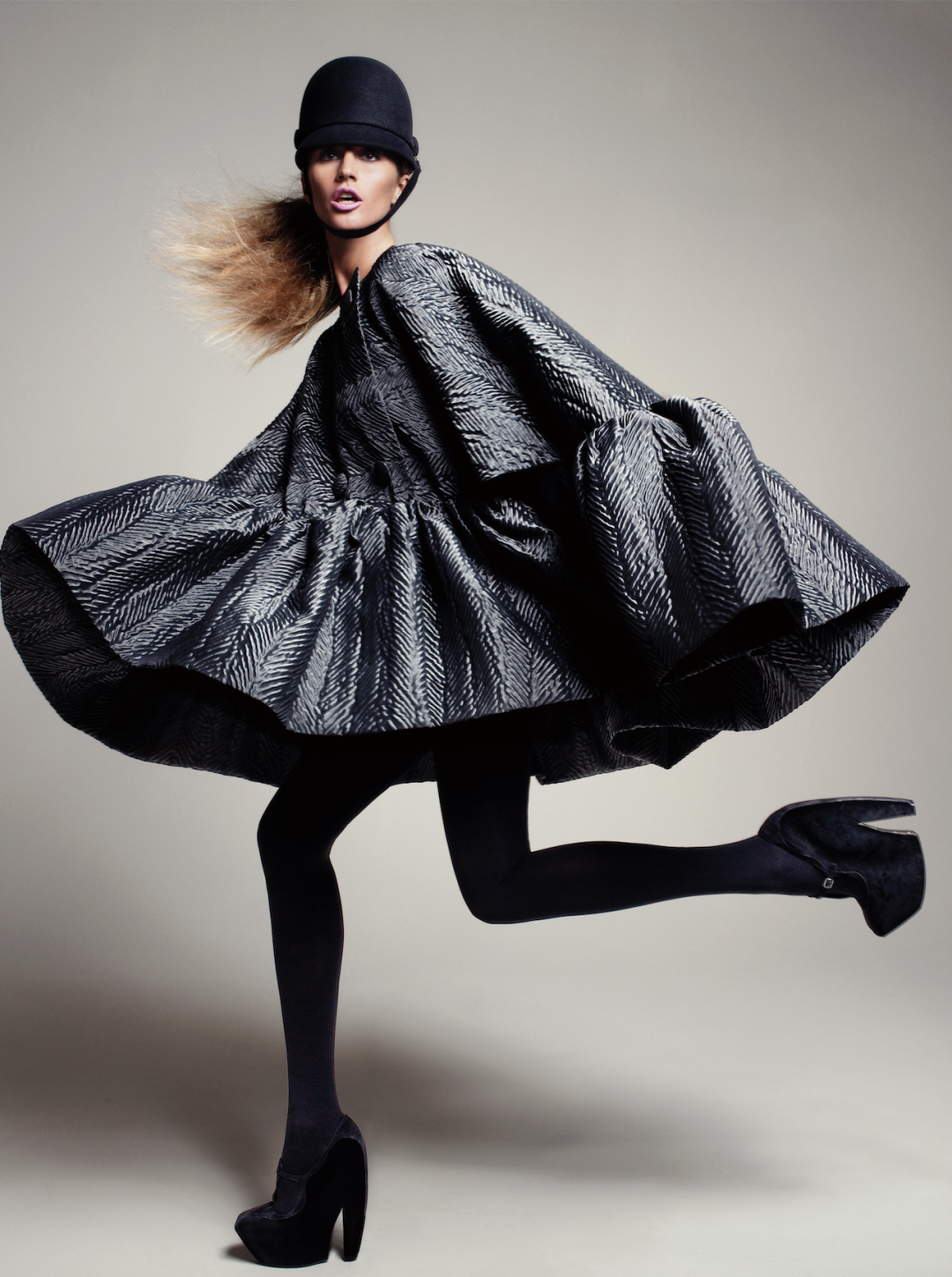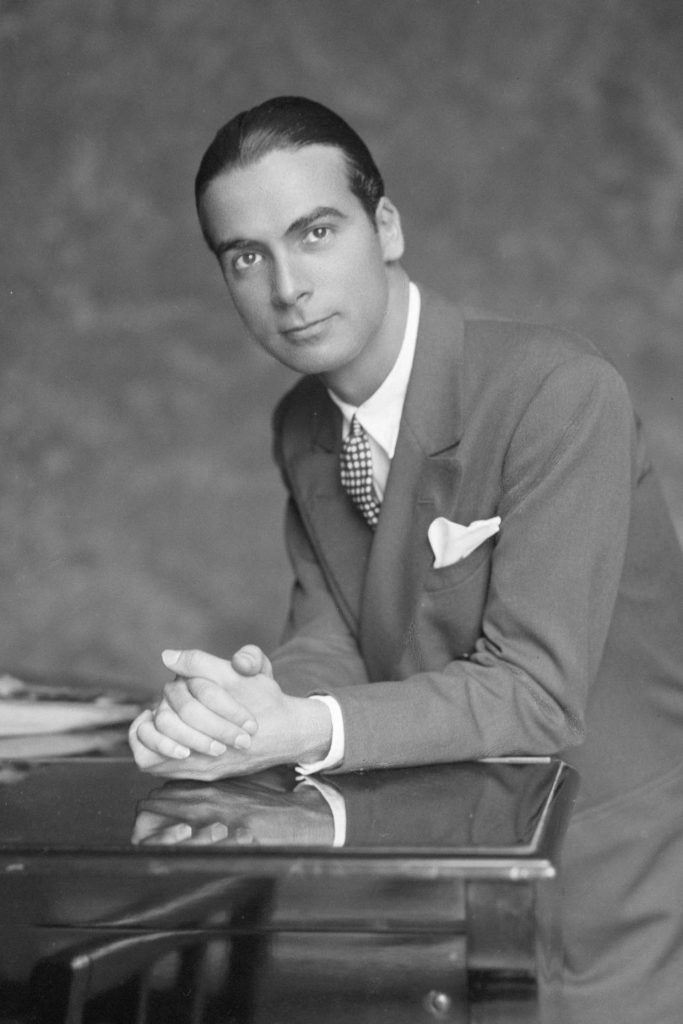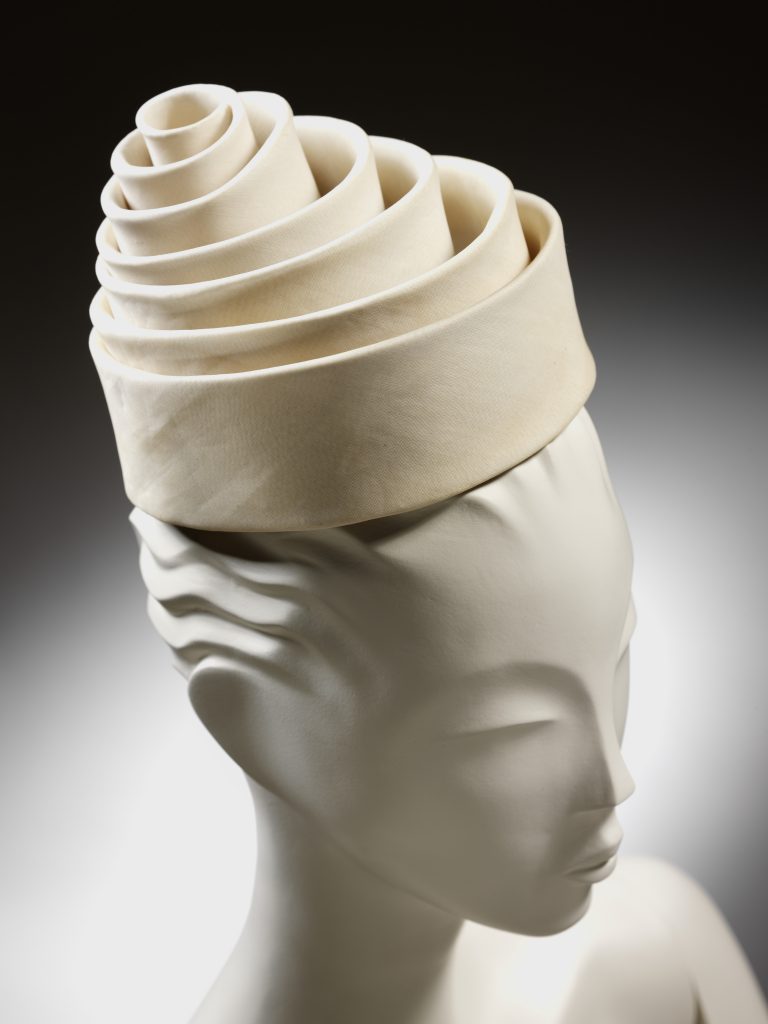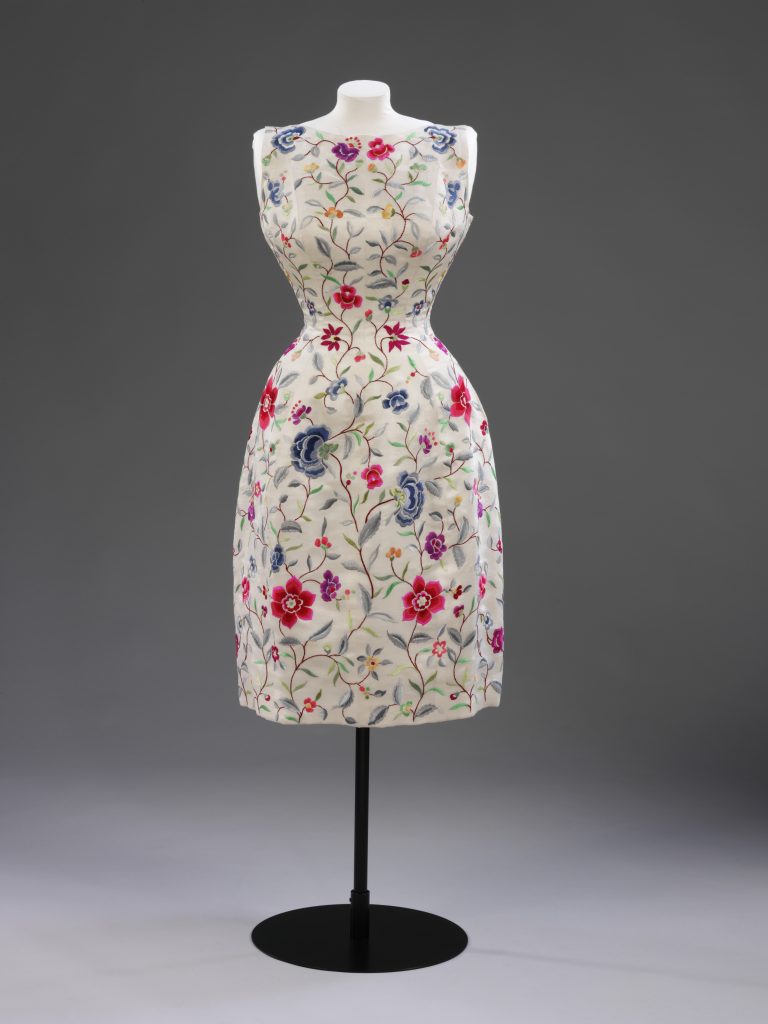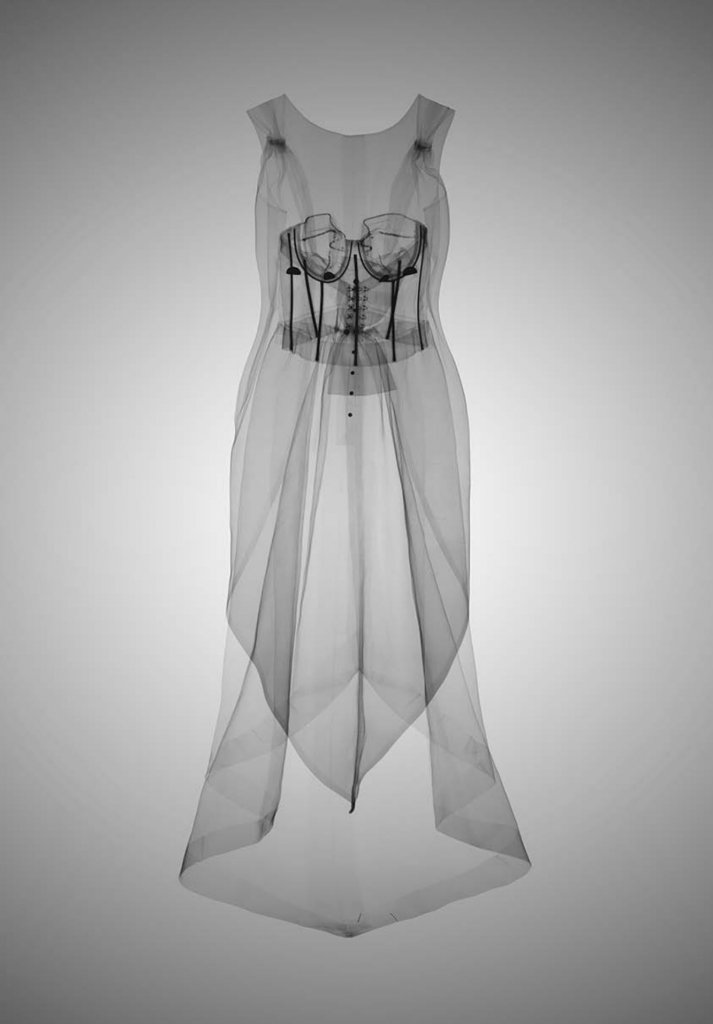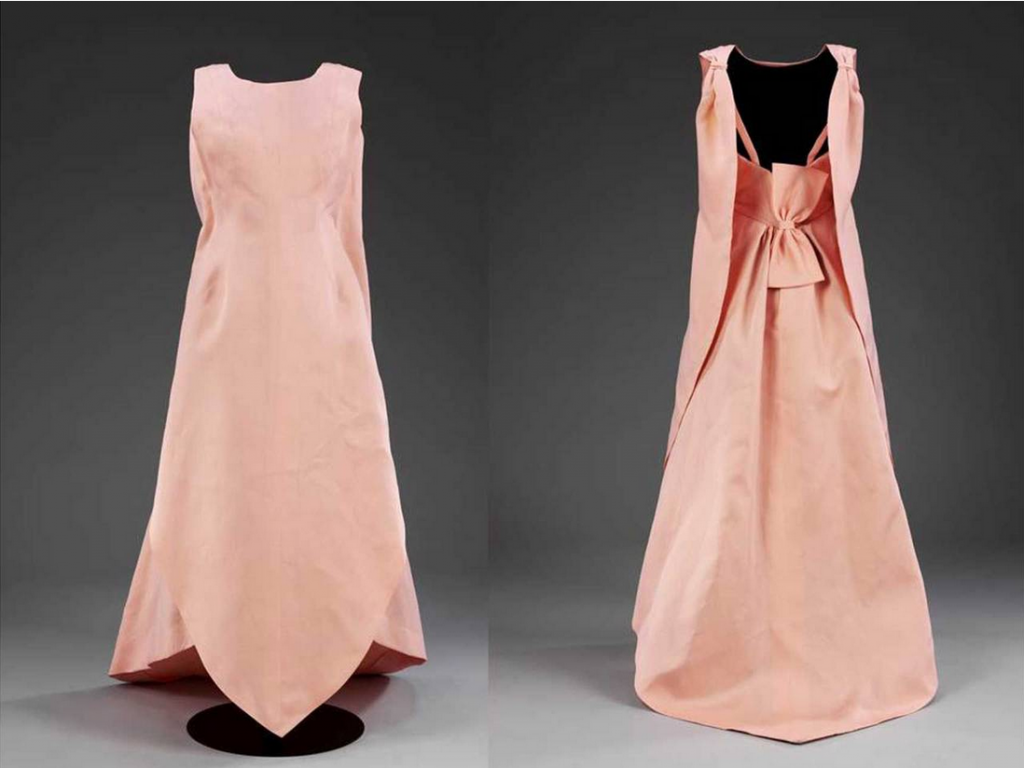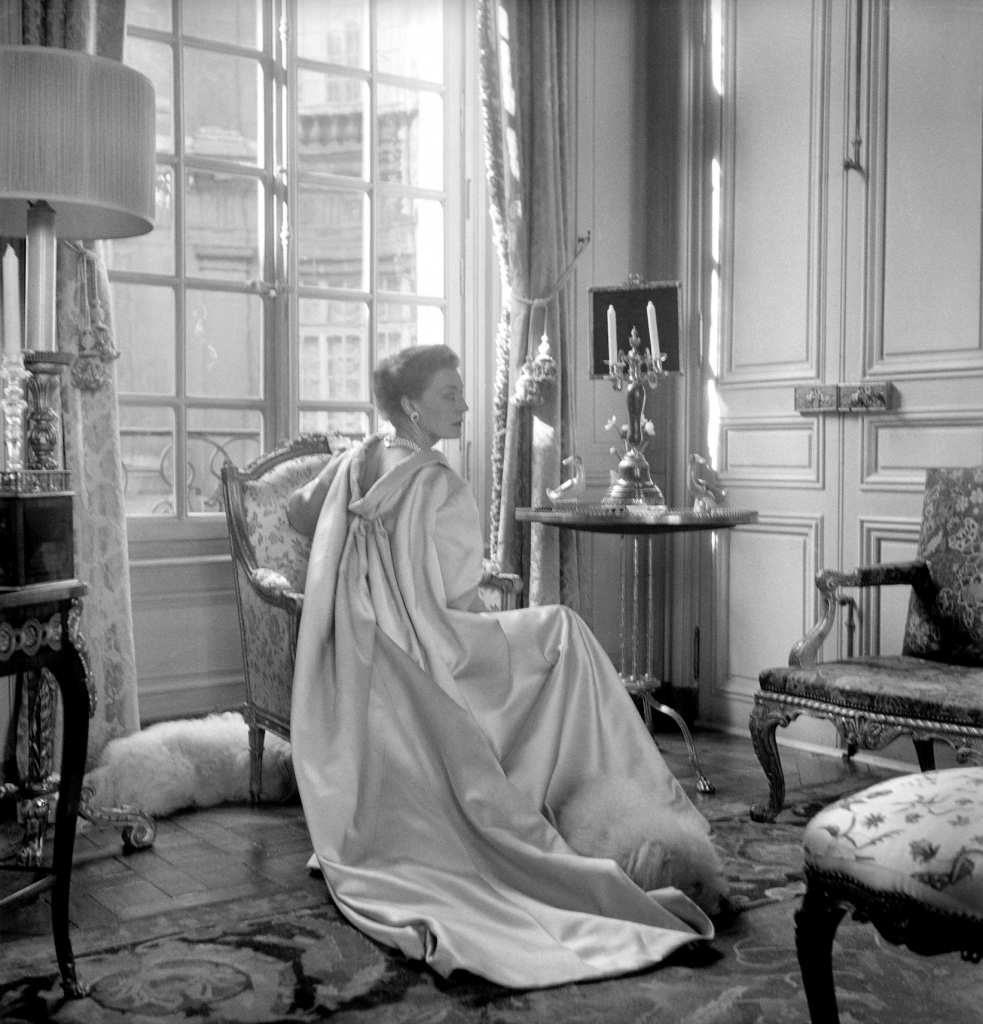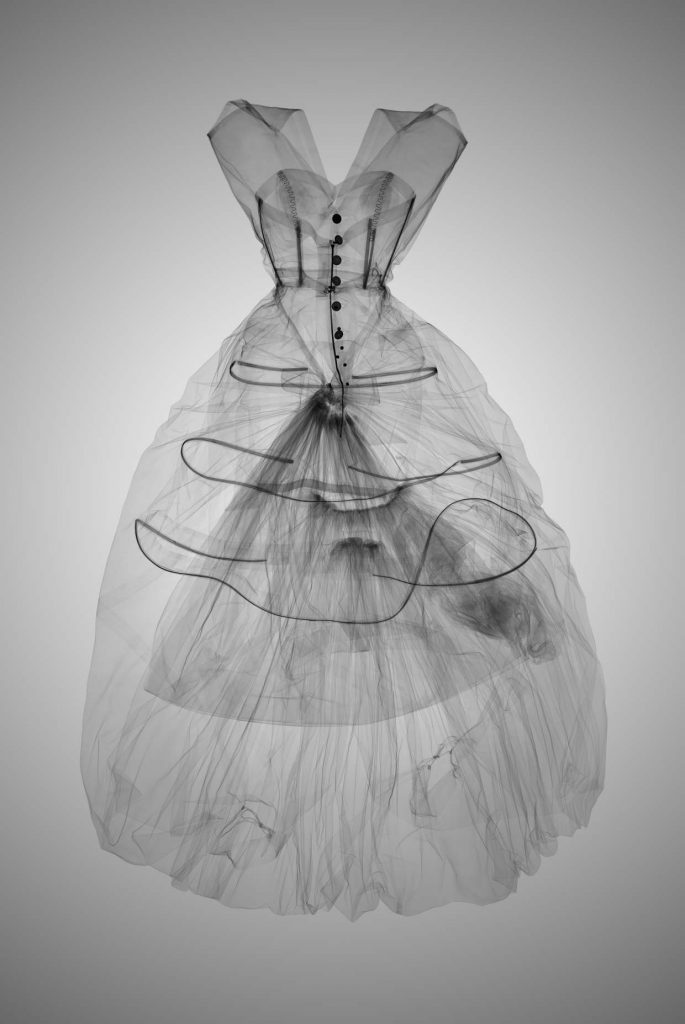Janice Breen Burns deep-dives into the life of Balenciaga, master of modern couture
Balenciaga: Shaping Fashion, Bendigo Art Gallery. This story first appeared in The Age and The Sydney Morning Herald.
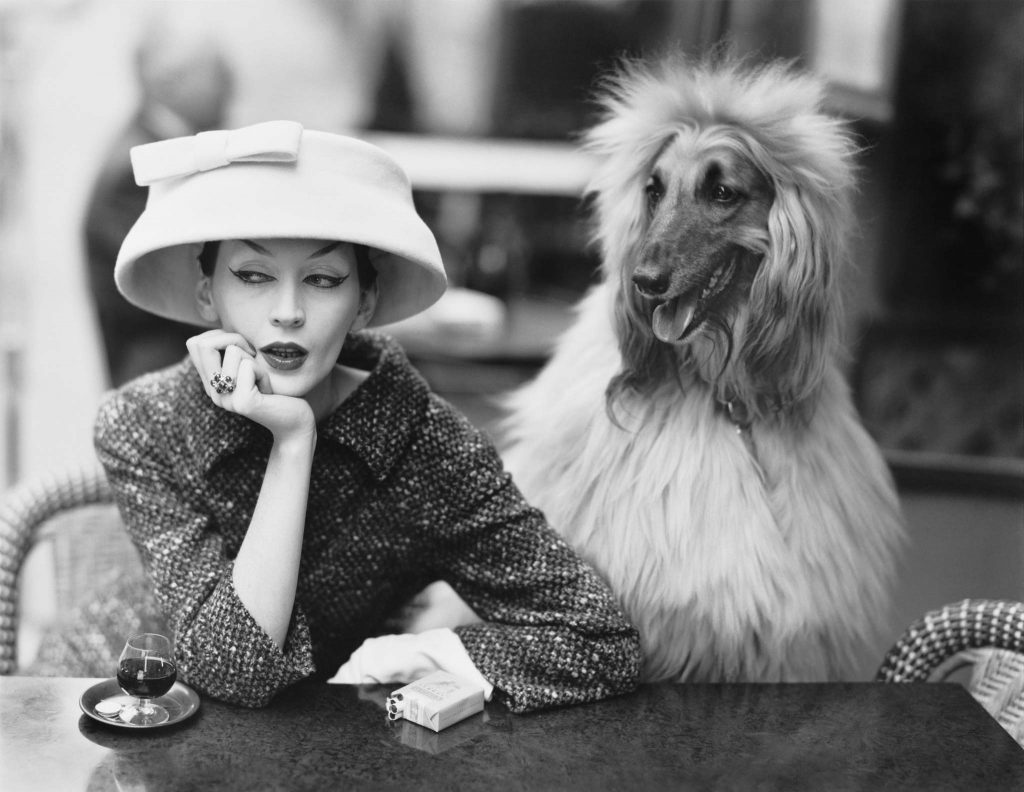
Dovima with Sacha, cloche and suit by Balenciaga, Caf des Deux Magots, Paris, 1955, The Richard Avedon Foundation
Curator Jessica Bridgfoot was still nutting out the logistics of shipping “Balenciaga: Shaping Fashion” from London’s Victoria and Albert Museum to the Bendigo Art Gallery a couple of years ago when a niggling thought popped into her mind. Who’ll love this one?
Who’s up for motoring up the Calder to Bendigo for a deep dive into the life of an enigmatic Spaniard whose heyday was more than half a century ago and who is NOT Dior, NOT Chanel? Not even as glamorously ubiquitous as Yves St. Laurent. “Balenciaga was and still is a big influence on contemporary fashion,” Bridgfoot says, “But as a designer, he isn’t that well known..”
For all the current cool of Balenciaga the brand (swelled in recent decades by the house’s appointment of Nicolas Ghesquiere in the 1990s, creator of the collectable Balenciaga Lariet bag, then Demna Gvasalia, founder of the uber-cool Vetements brand in 2016) interest in an exhibition around the history of its founder was tricky to gauge, particularly among millennials and GenZeds.
“We knew our hard core (fashion fans) would definitely be here,” says Bridgfoot, “But, who else? It was a bit of a risk to be honest.”
She wondered how many know or care that Balenciaga’s oeuvre is the bedrock of modern fashion. Or that the knock-on effect of his aesthetic ran through the careers of Andre Courreges, Emanuel Ungaro, Paco Rabanne and countless others. That it still runs in the work of avante-gardists such as Gareth Pugh, Iris Van Herpen and Molly Goddard. (In the exhibition, they explain in filmed interviews why they’re so besotted.)
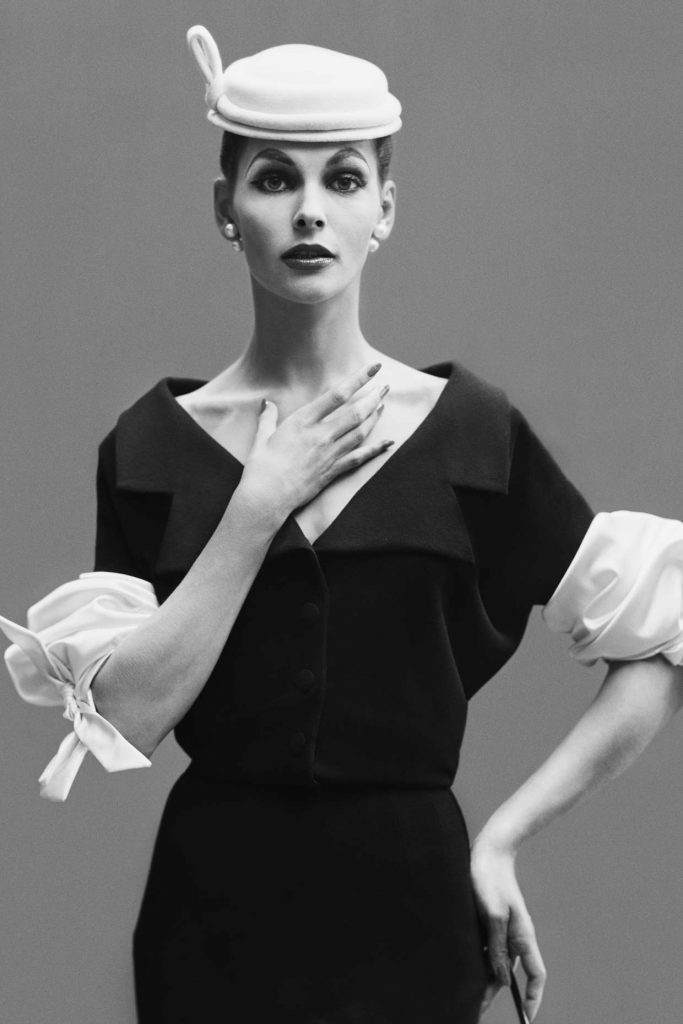
Model Georgia Hamilton wearing Balenciaga bubble sleeve dress, 1953. Photograph by Richard Avedon for Harper’s Bazaar© The Richard Avedon Foundation.
The “Shaping Fashion” bit of the exhibition’s title refers to Balenciaga’s virtual liberation of women from the tyranny of a perfect waistline. He gave them the “baby doll”, the “sack” and other sculptural silhouettes – odd ball and decried at the time – that swung free as trapeze away from the body, or swayed around, or even bounced behind it.
His wizardry arced across myriad definitions of glamour, from monkish black minimalism (he was fanatic about the right black), to flamenco-esque swathes of stiffened silk ruffles in vivid red or violet.
In his entire life Balenciaga gave just two media interviews; both after he retired in 1968 and had already shuttered his Parisian atelier (he’d opened it in 1937 at the age of 40) and his Spanish ateliers in San Sebastian (opened in 1917 when he was 22) Barcelona and Madrid. What we know about the reasons behind his genius is mostly a patchwork of hearsay and connected dots.
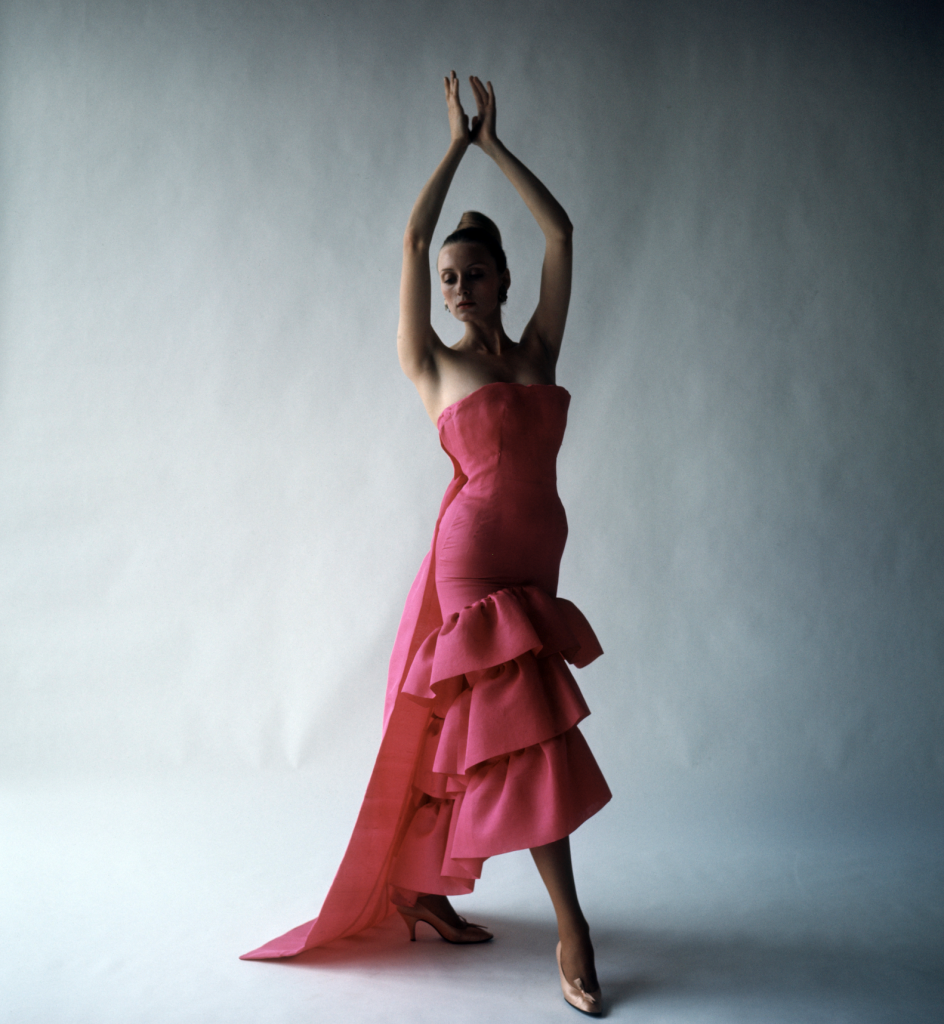
The flamenco-inspired evening dress, 1962. Photograph by Cecil Beaton© The Cecil Beaton Studio Archive at Sotheby’s
We do know he was born to a seamstress and a fisherman in 1895 in a tiny village near the jet set resort of San Sebastian. He learnt sewing at his mother’s knee, was apprenticed to a tailor in Madrid at 12, and by his late teens was stitching couture for Spain’s aristocrats in San Sebastian. When civil war shrank his client list, he switched focus to Paris, opening his legendary atelier at 10 Avenue George V.
One tick of Balenciaga the man that’s not disputed: his neurotic perfectionism. Designer Andre Courreges remembered his mentor’s atelier as near-monastic; “unadorned” and “intensely silent”. Its vendeuse, Madame Renee, as its formidable “mother superior”. Mannequins were instructed not to pose or smile, even for salon shows. The focus, Balenciaga insisted, must always be on the clothes. There was no music. Only hushed voices and tippy-toes spiked the quiet.
Balenciaga himself lorded in a white dust coat, obsessively checking and re-checking toiles and work progress, relentlessly trialling fabrics for feel, function, and for the blacks, maroons, violets and reds that were precisely, intuitively, scientifically, right for what he had in mind.
He collected black pearls, traditional costumery, paintings. He loved Velasquez and Goya and echoes of the Spanish painters’ intense oils and chiaroscuro crept into his collections. But he borrowed from the elegant opulence of bullfighters’ crystal-crusted boleros and flamboyant flamenco gowns and, ever contradictory, drew deeply from the austere drama of ecclesiastical robes.
His acquaintances ranged from Cecil Beaton, Diana Vreeland, Andre Courreges, Hubert Givenchy, a host of other fashion luminaries and a slew of the world’s most celebrated women and among them, anecdotes were often wildly contradictory. He was pompous and cool, no, kindly and warm; he was fanatically religious, no, simply devout; he was humourless and dour, no, witty.
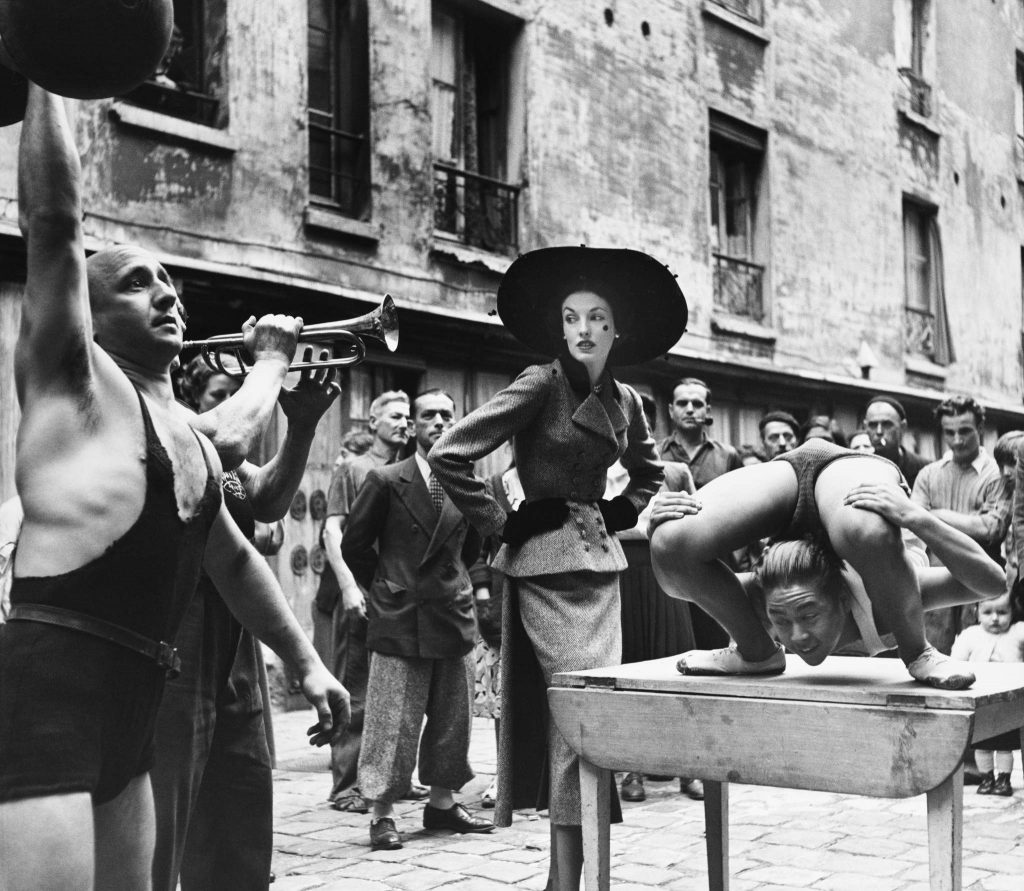
Elise Daniels with street performers, suit by Balenciaga, Le Marais, Paris, 1948 – The Richard Avedon Foundation
“He was intensely private,” says Stephanie Wood, the Victoria and Albert Museum’s researcher for Cassie Davies-Strodder, curator of the original Balenciaga exhibition. “Even at his shows; he would not come out and bow. He’d hide behind the curtain and peek through. He’s not a household name for many people because he wasn’t interested in the press and celebrity of being a fashion designer and so there’s not a huge amount of information about him.”
There is, however, a huge amount of curiosity. When Bendigo Gallery did announce earlier this year that Balenciaga was on its way, ticket pre-sales went nuts. “Social media just exploded,” says Bridgfoot. “We realised we might just have a dark horse on our hands.”
Bridgfoot was project curator for the exhibition’s transfer from London, but more recently was appointed (after an international search) to succeed visionary gallery director Karen Quinlan, now heading Canberra’s National Portrait Gallery.
Quinlan’s are big heels to fill. Her string of blockbuster fashion exhibitions in recent years, based around the history of wedding gowns, knickers, Grace Kelly’s style, and legendary Hollywood costumer Edith Head among them, pumped a certain kind of cool into Bendigo gallery that’s spilt into the city and surrounding region. The state government’s tourism arm, Visit Victoria, is royally chuffed. And the dark horse Balenciaga: Shaping Fashion was Quinlan’s parting gift. Another blockbuster in the bud.
Now it’s Bridgfoot’s job to nutshell one of fashion’s most complex and seminal designers. She’s installed 200-odd exhibits, from complete gowns and tailoring, to sketches and worklife flotsam such as his pin cushion from the Paris atelier, all split into a trinity of themes that governed his creative life: Shape and Volume, Minimalism, and Materials.
“His focus was always about the fabric, the volume, the sculptural effect of the garment,” Bridgfoot explains, “Rather than the fashion designer’s idea of presenting an “ideal” woman, he worked more like a fine artist, sculpting beyond the bodyline, looking at a garment as an artist would, not to mimic the body, but adding, enhancing, going beyond.”
He picked fabrics for their weight, malleability and kinetic effect. Would they drape and sway, or stick out and stay put, just so, for the airy floating layers, the bubbled puffs, sharp geometrics or rippling frills he envisaged extending away from the bodyline?
“He worked closely with textile manufacturers so he could get exactly what he wanted, or he’d innovate and develop new fabrics with them,” says Wood. “One of his favourites was the (now defunct) silk gazar; thick and stiff but lightweight enough to manipulate in his amazing way, into all kinds of architectural shapes.”
Wood cites the exhibition’s “La Tulipe”, a pale musk silk gazar evening gown originally worn by Ava Gardner, as one fascinating example of Balenciaga’s genius. It’s fashioned with a petal-shaped front panel clenched on the shoulders and kinked to echo the wearer’s waist but otherwise cut to drop without interruption from a rounded, sleeveless neckline. It hovers, extending forward, around and away from the body to a softly peaked hemline in the front.
The gown’s apparently simple design is, in fact, exquisitely complex. In profile, it is impossibly elegant, resembling a flower with the floating “petal” panel forming a natural frame for the gown’s silk bow and petal-hemmed ball skirt at the back.
“He was so skilled at manipulating fabric that he could completely transform a woman’s body,” Wood says. “In a dress like this; maybe the woman’s body wasn’t perfect – in fact, he preferred women who had slightly more of a tummy and bigger hips – and maybe she wouldn’t feel so confident, but in this, she was absolutely confident. The garment did all of the work. That was Balenciaga.”
In the 1950s and 1960s Balenciaga smashed fashion’s classic hourglass blueprint with a succession of sack, tunic and exuberantly bubbled, caped and geometric silhouettes that completely enveloped or altered the outline of a woman’s body. But in his early career, he had honed and experimented with the bust-waist-hips silhouette as eagerly as any couturier. He’d learned first from his seamstress mother, then the tailor to whom he was apprenticed at the age of 12, then by sketching and adapting designs by Gabrielle Chanel and Madeleine Vionnet, an accepted practice at the time.
“Vionnet, particularly, inspired him,” Wood says. “She was known for creating the bias cut dress (a technique enabling fabric to skim and sway gracefully) and Balenciaga was impressed by the way she takes a very 360 degree approach to the body.”
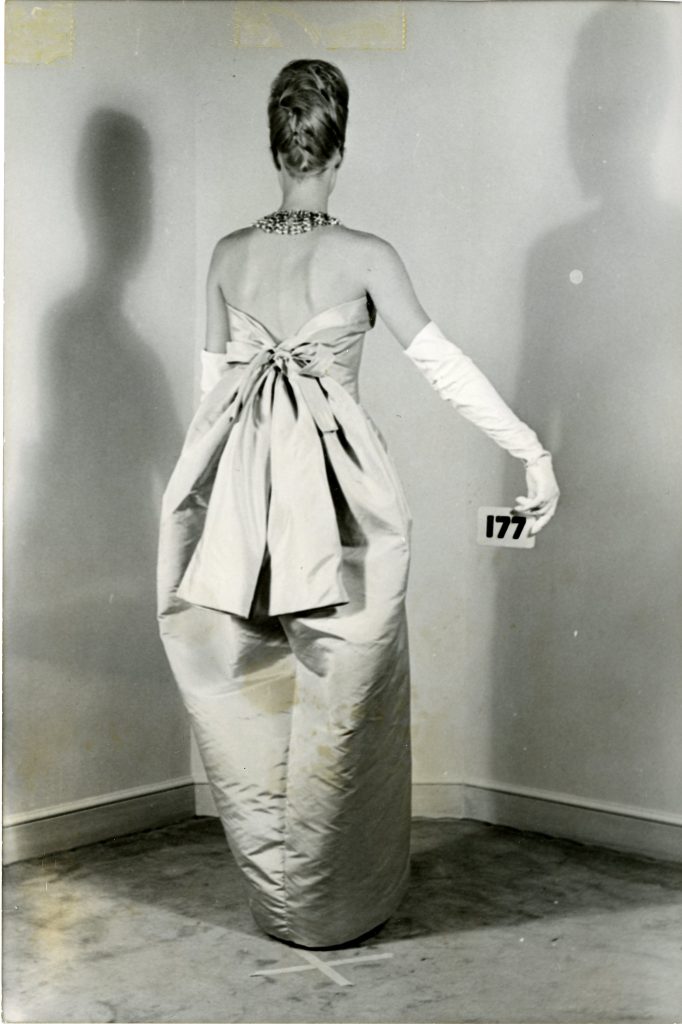
Model wearing Amphora Line evening dress, 1960. Photograph by Tom Kublin for Balenciaga Courtesy of the Balenciaga Archives, Paris

